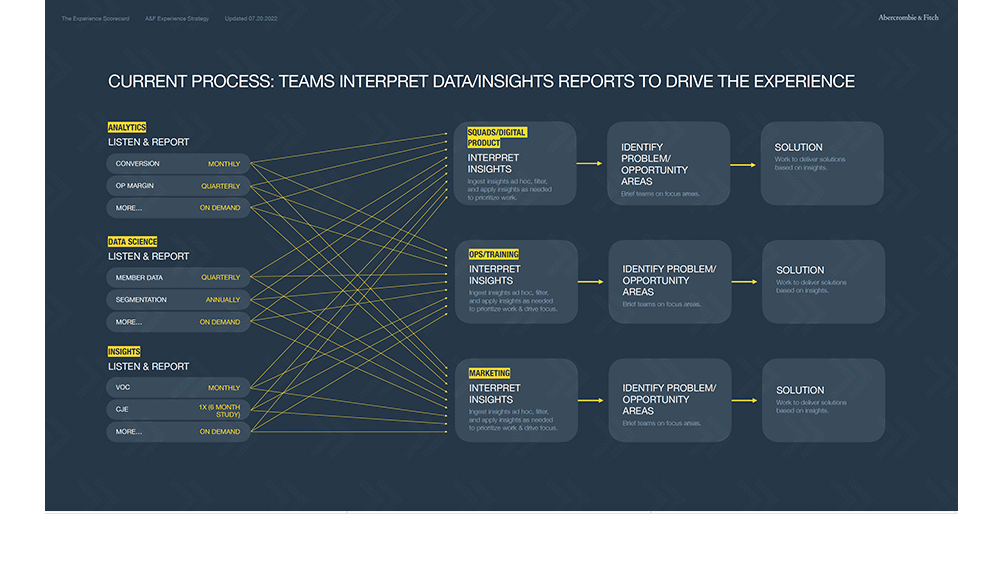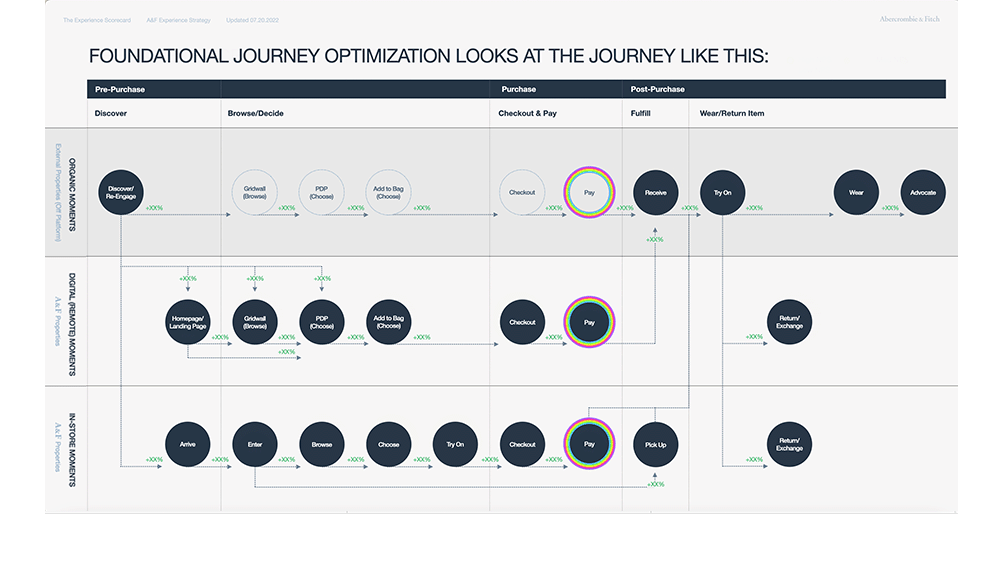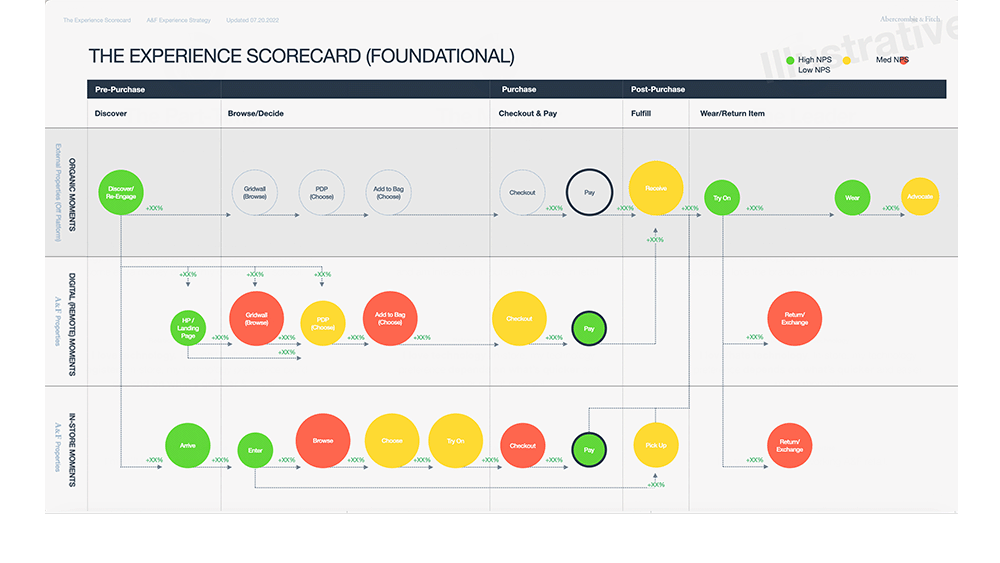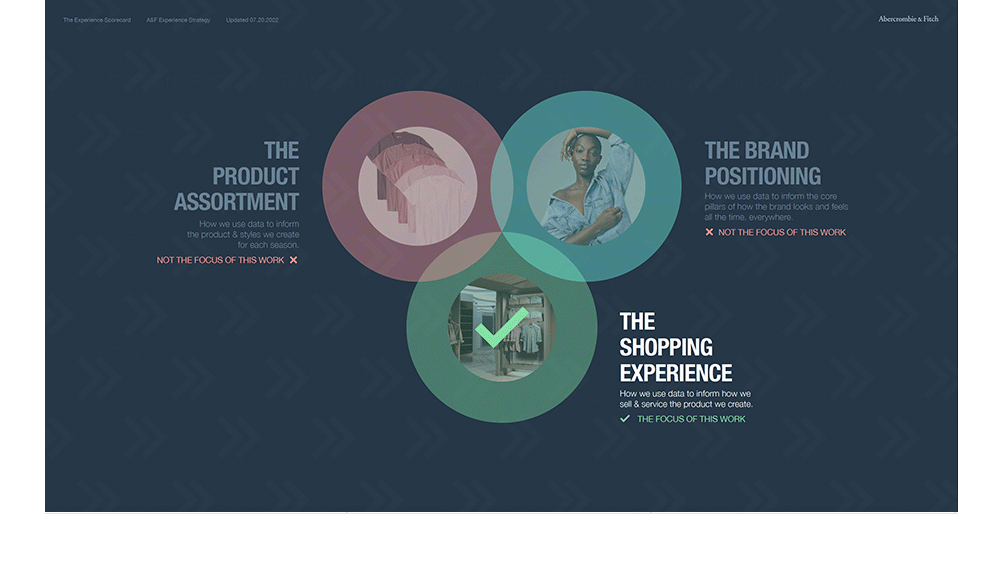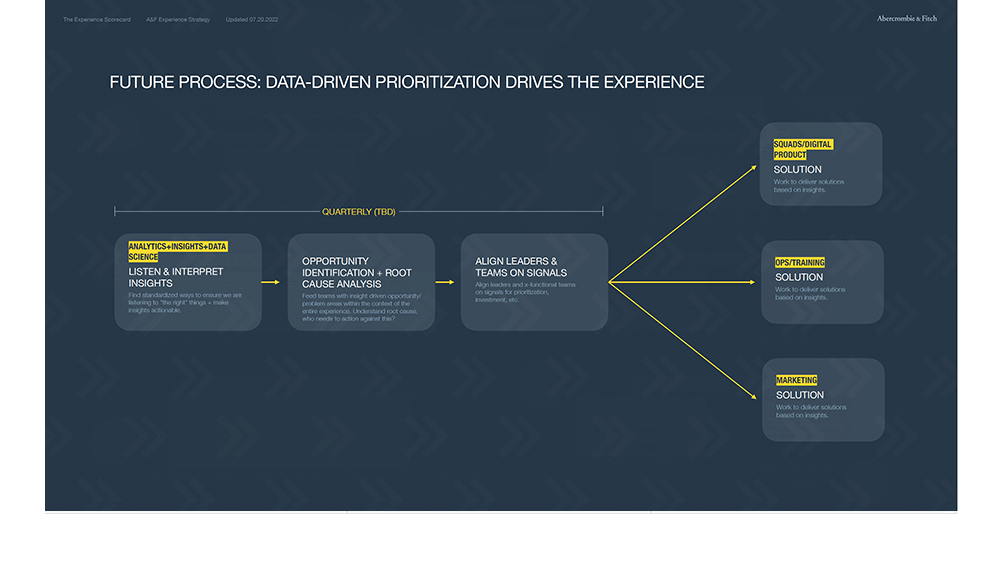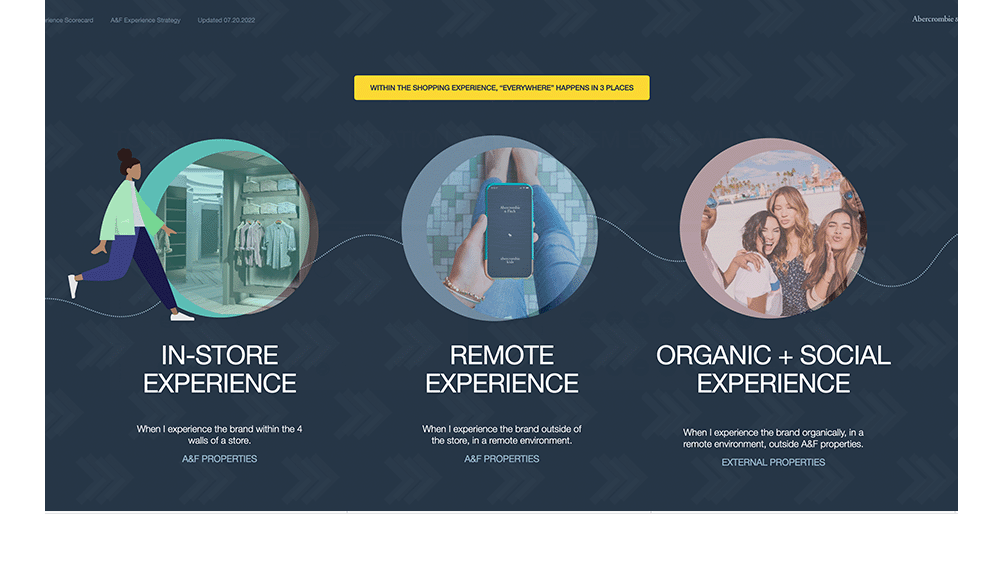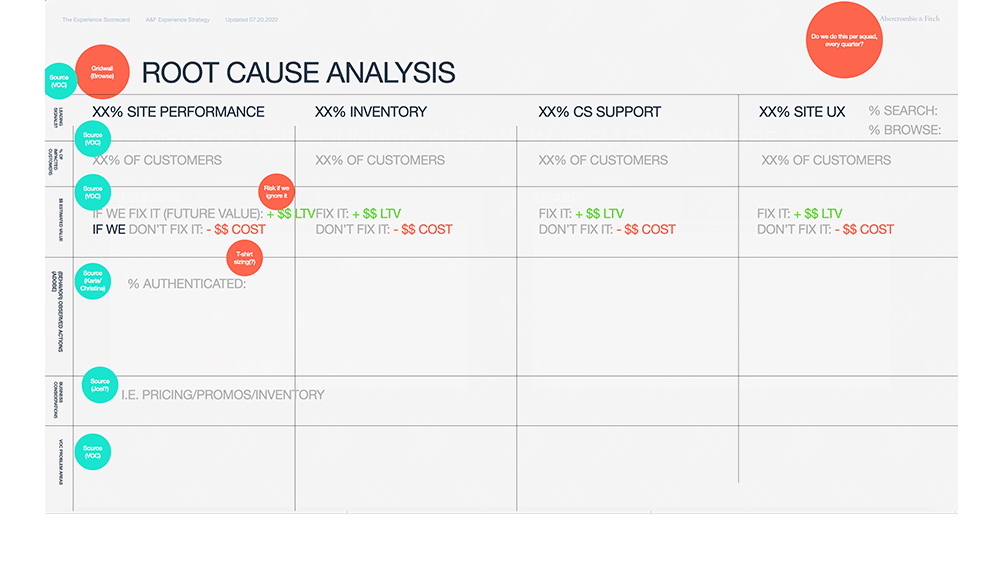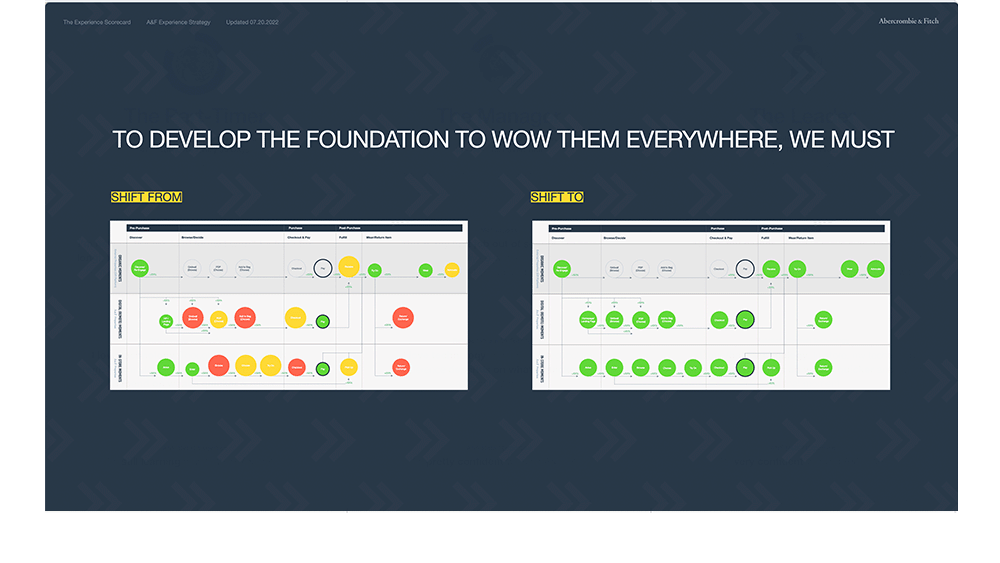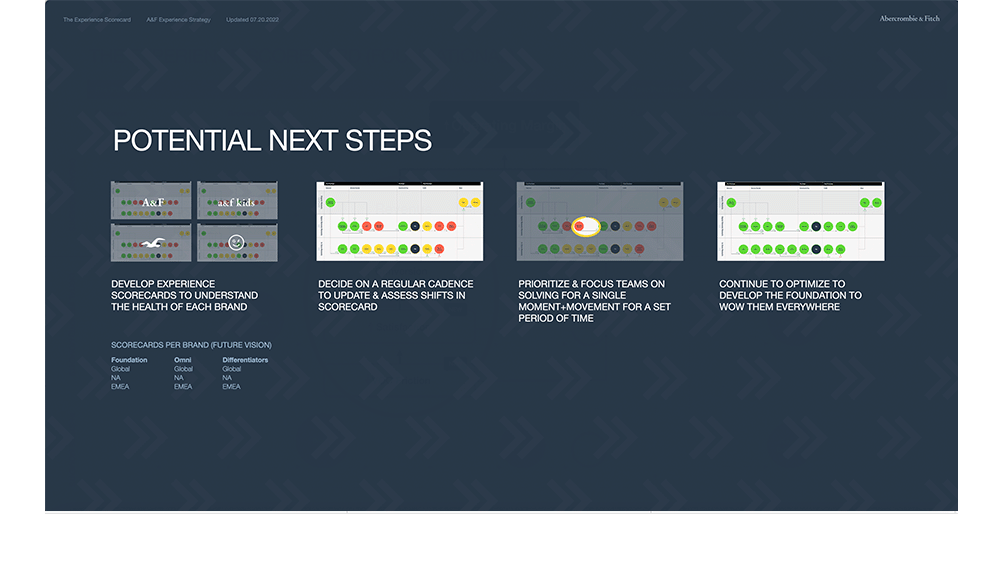When Aspiration Meets Reality
While Abercrombie & Fitch Co. had strong customer experience aspirations and multiple data collection points, the organization lacked a unified framework for measuring and improving experience. Teams were working with fragmented data, making it difficult to prioritize initiatives and demonstrate ROI. The business needed a structured approach to understand how experience improvements connected to key performance indicators.
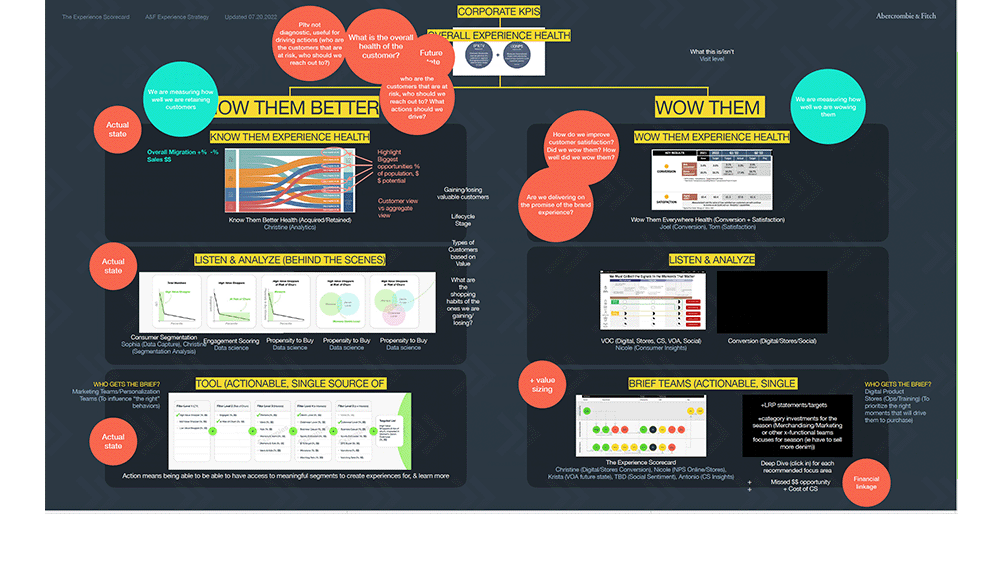
In retail, every decision hinges on deeply understanding the customer journey - their desires, behaviors, and pain points. But our reality at A&F was disjointed: three analytics teams produced independent reports while product, marketing, and operations each tried to piece together their own narrative. These fragmented data streams never converged into the cohesive story we needed to drive meaningful improvements.

